Abstract
1. Injections of tetrodotoxin or saxitoxin (25 ng in 0·10 ml.) into a lateral cerebral ventricle caused deep body temperature of cats to fall approximately the same amount (2° C) whether the animals were resting in the cold (4° C) or were responding to escape heat.
2. Continuous exposure to heat either prevented the hypothermic response or enhanced the level of tachypnoea required to lower body temperature. Tetrodotoxin also caused hypothermia when an animal was lever pressing to obtain heat in the cold environment.
3. These results provide evidence that agents which alter the set-point for physiological thermoregulatory activity produce a complementary shift in the behavioural set-point as well.
Full text
PDF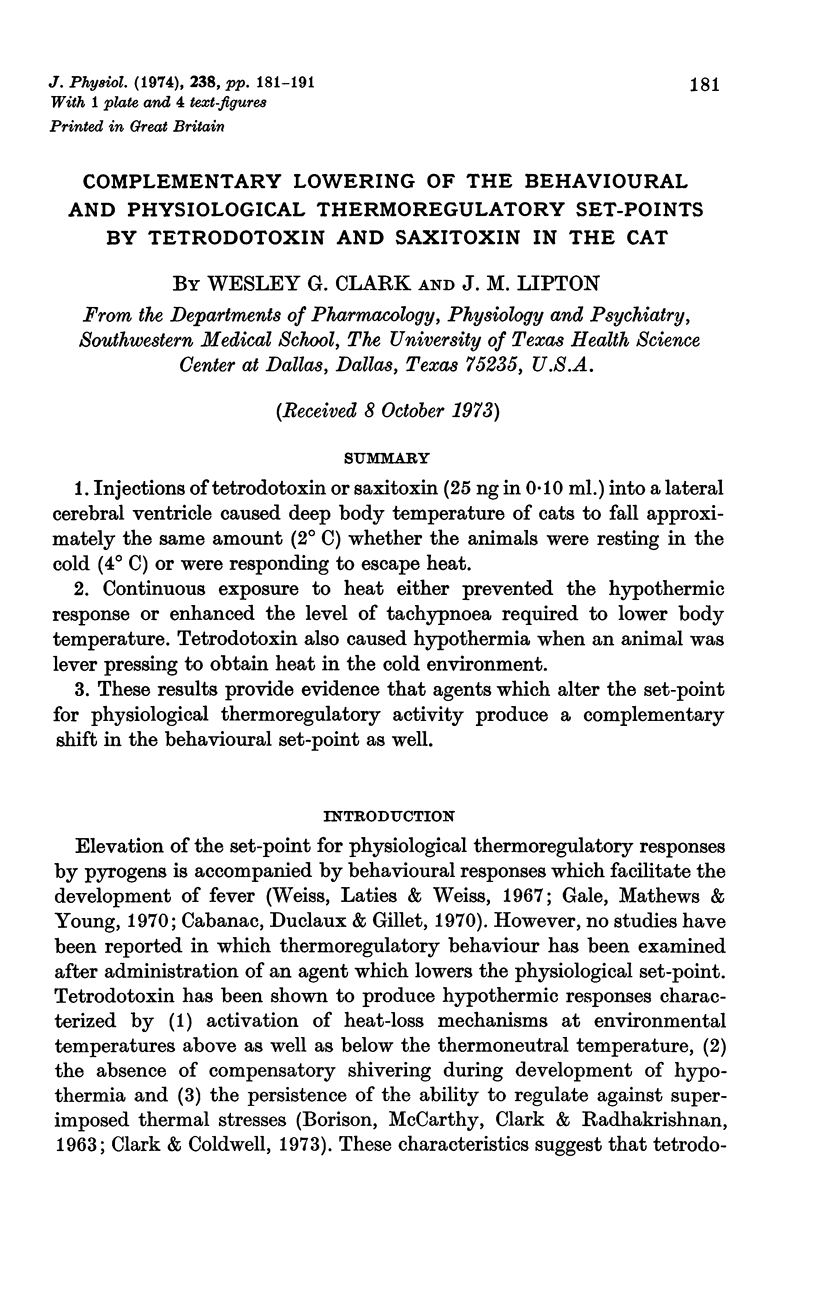
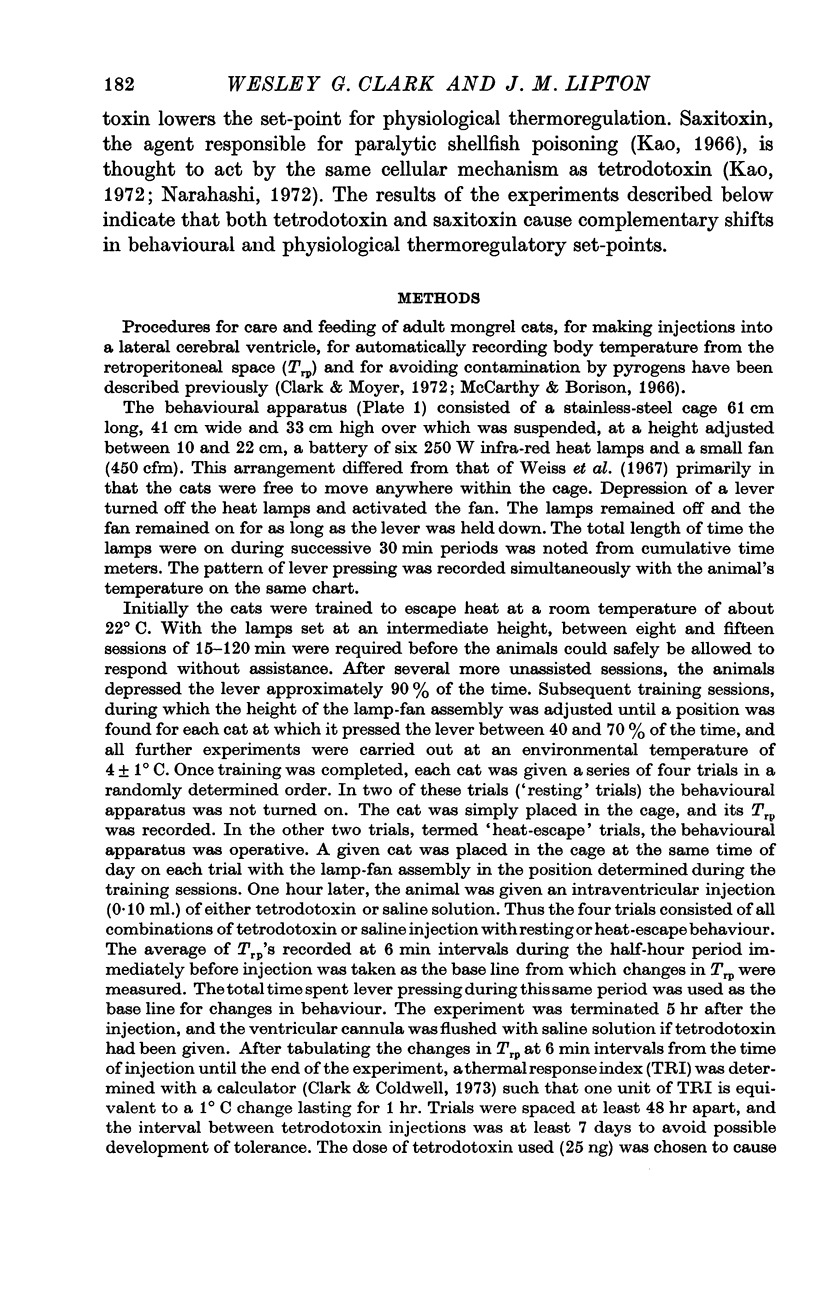
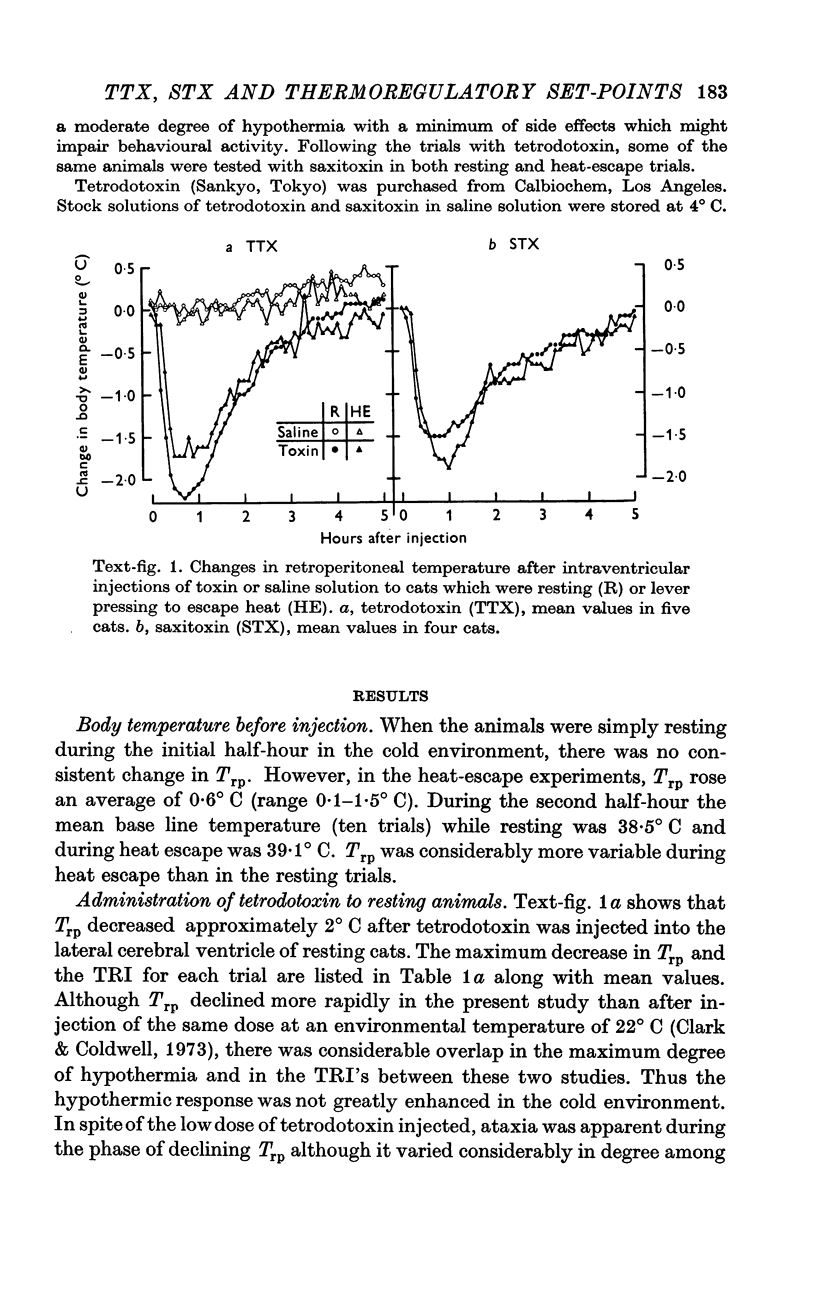
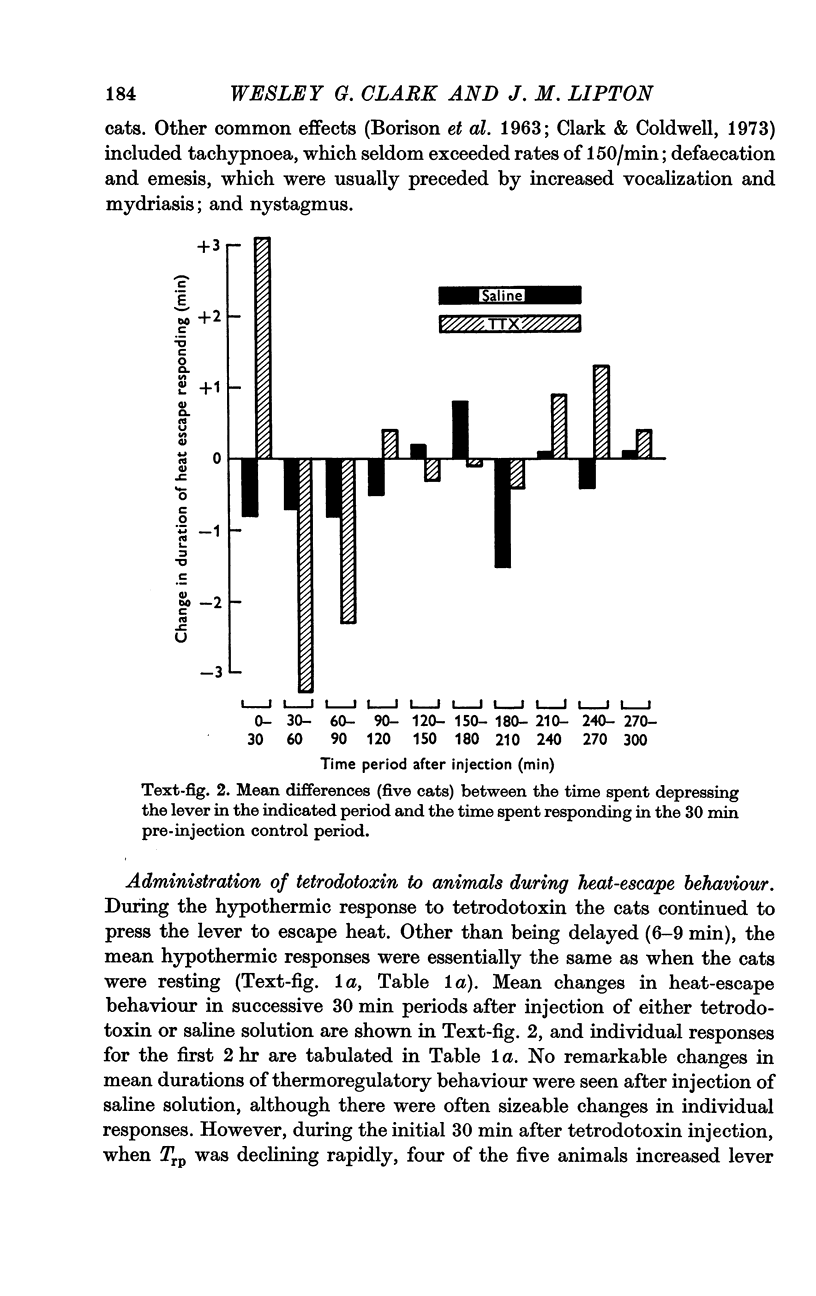
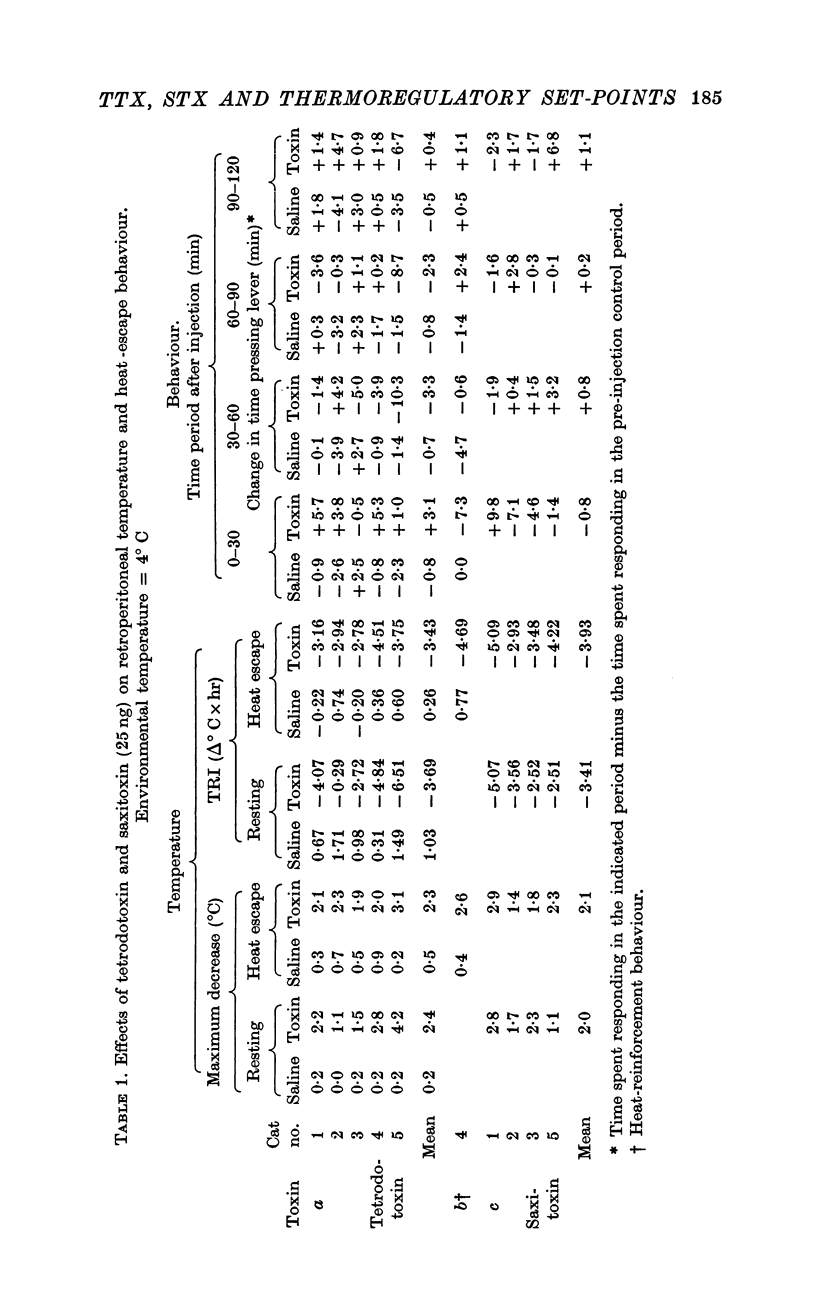
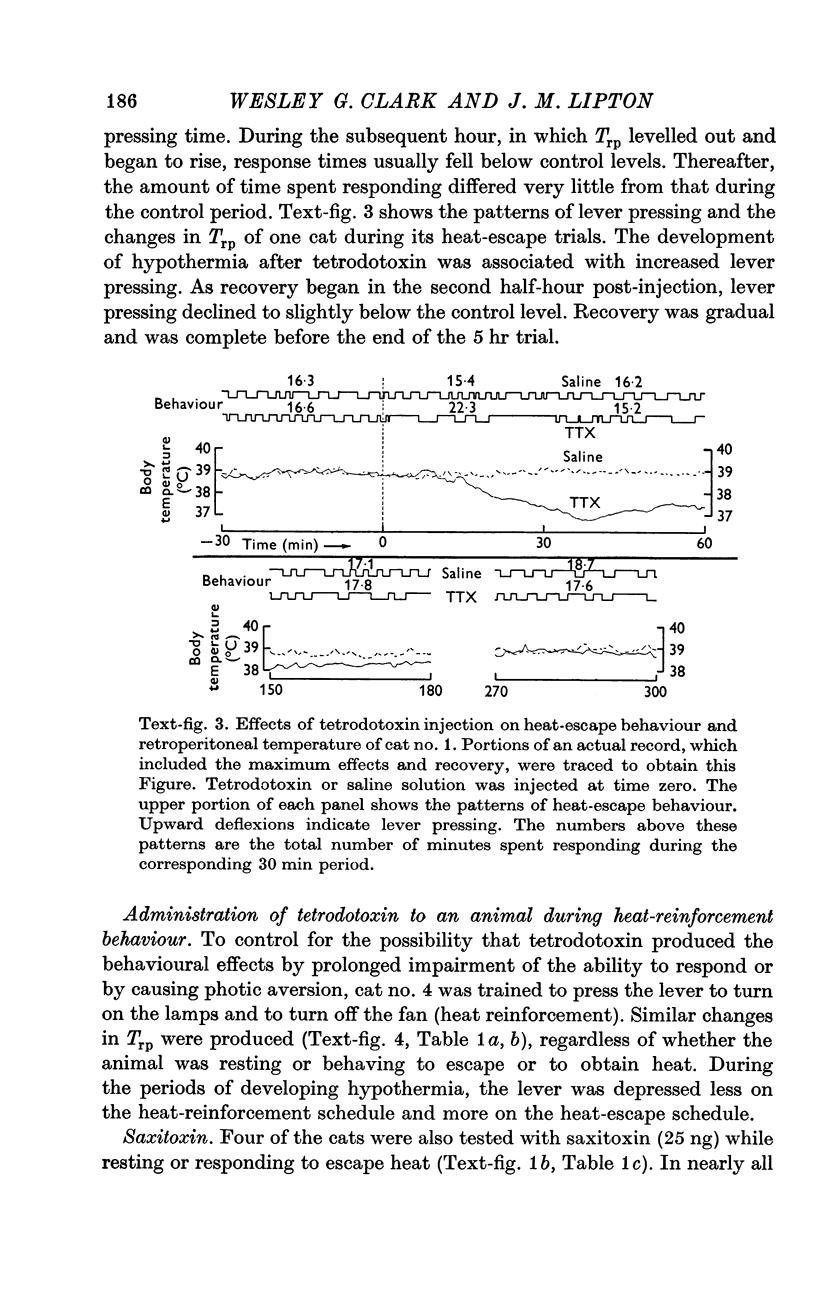
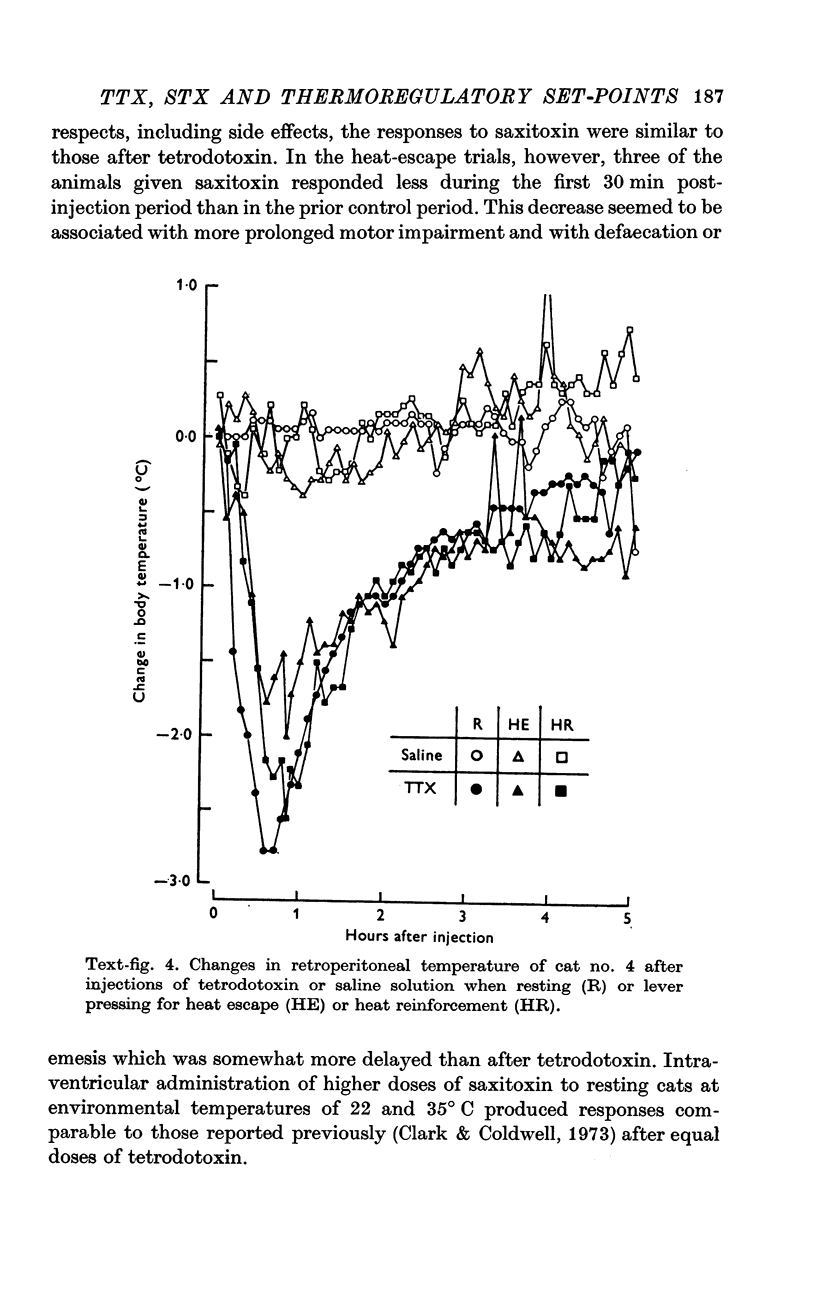
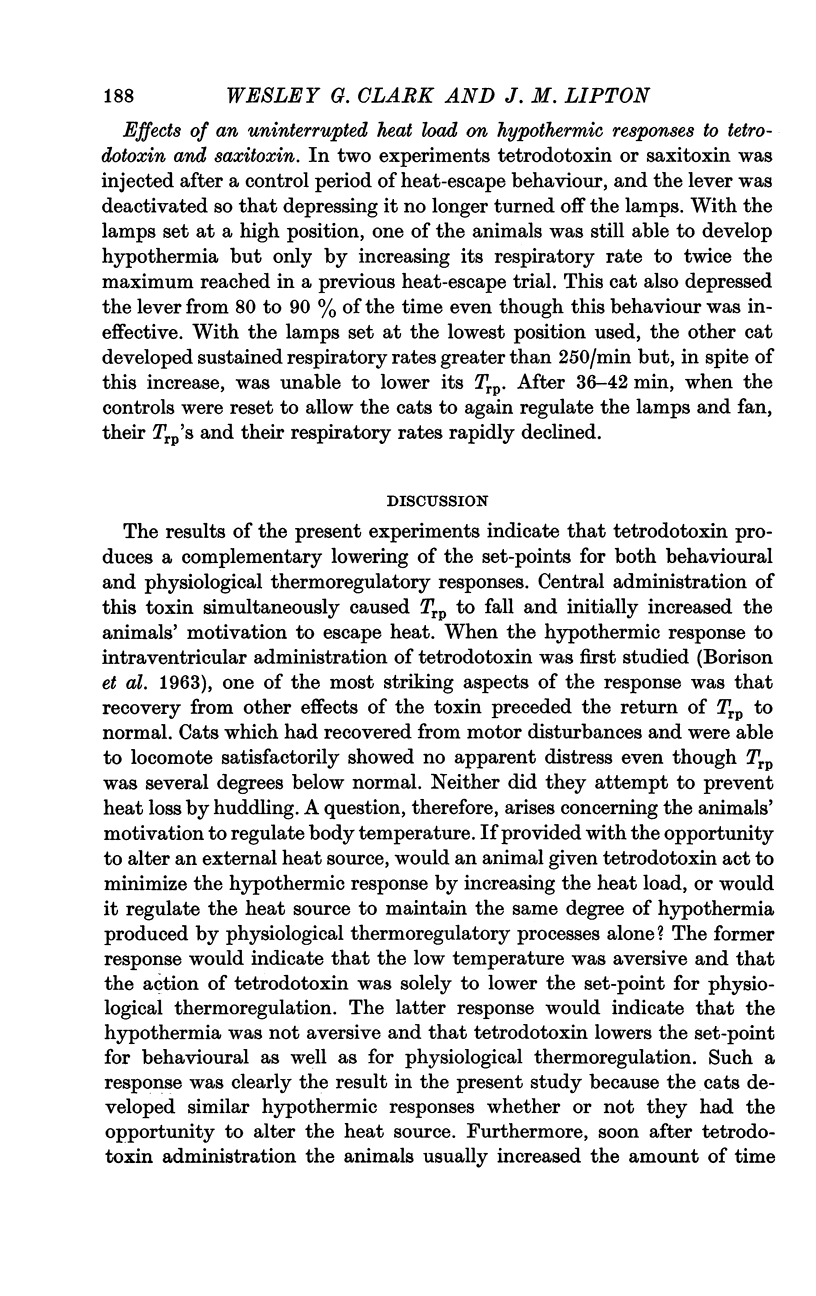
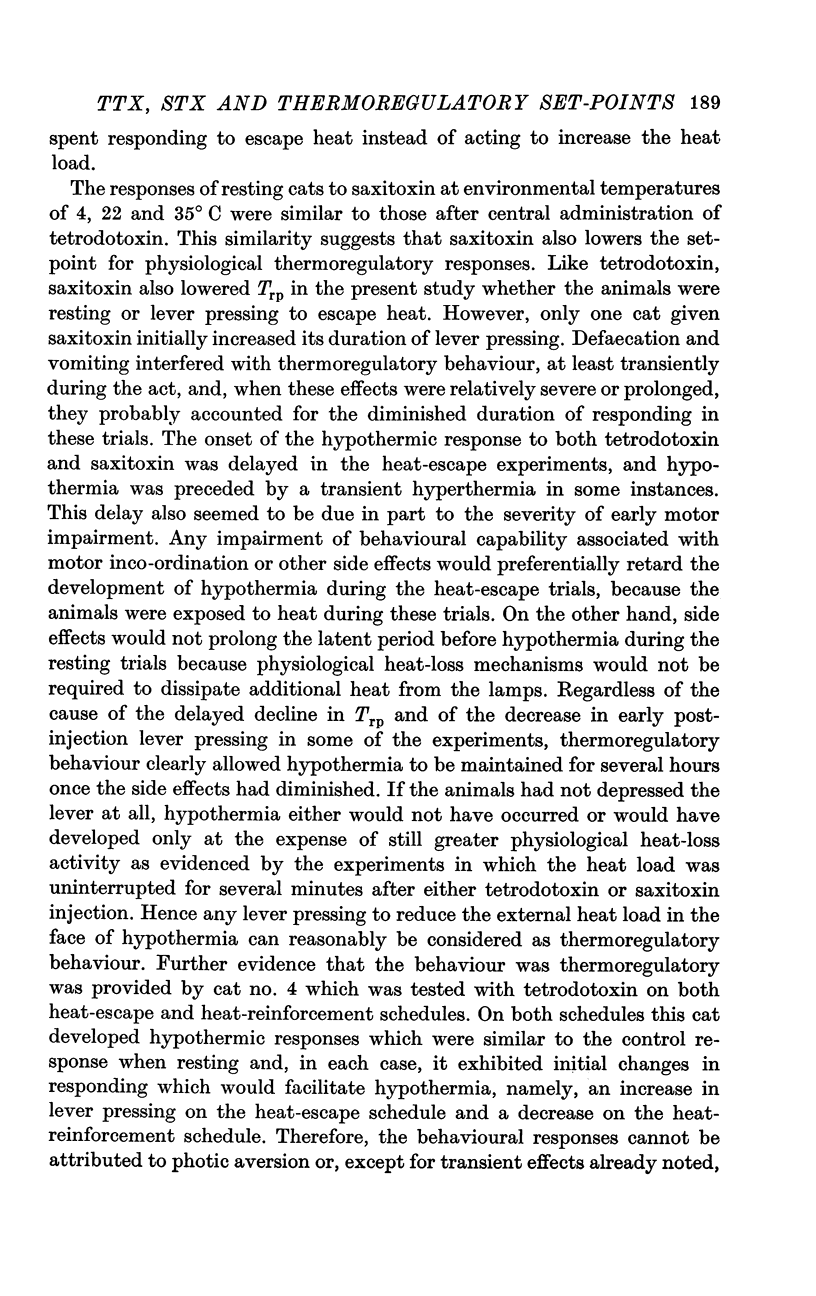
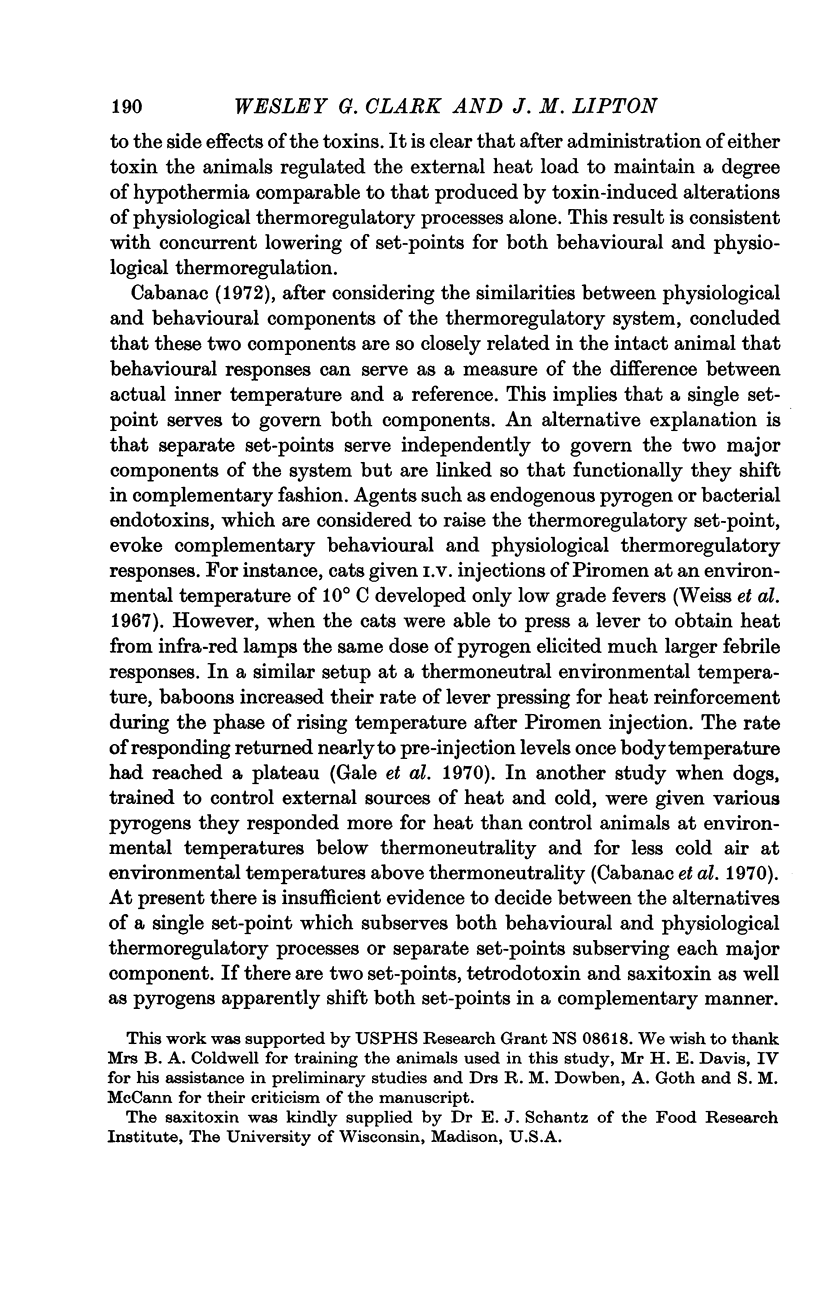

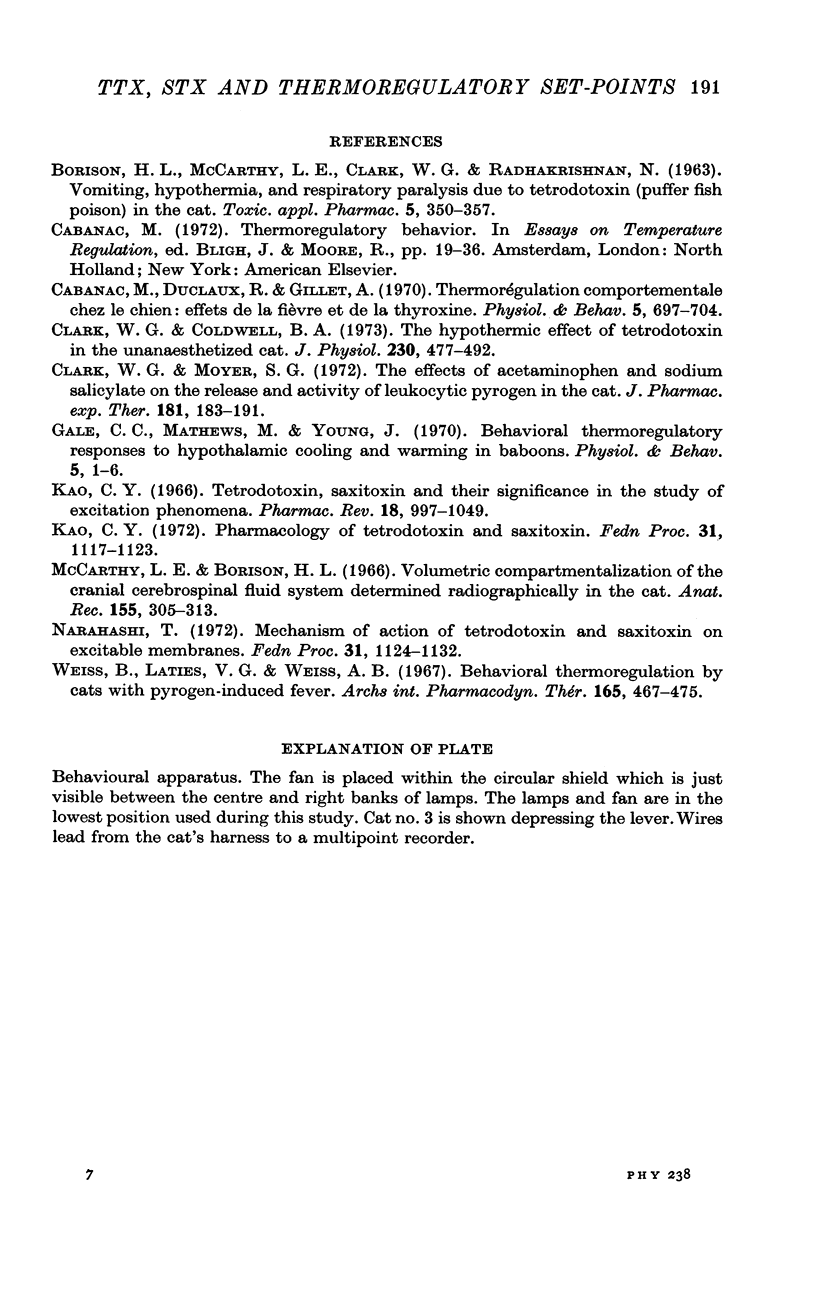
Images in this article
Selected References
These references are in PubMed. This may not be the complete list of references from this article.
- BORISON H. L., McCARTHYLE, CLARK W. G., RADHAKRISHAN N. Vomiting, hypothermia, and respiratory paralysis due to tetrodotoxin (puffer fish poison) in the cat. Toxicol Appl Pharmacol. 1963 May;5:350–357. doi: 10.1016/0041-008x(63)90094-2. [DOI] [PubMed] [Google Scholar]
- Cabanac M., Duclaux R., Gillet A. Thermorégulation comportementale chez le chien: effets de la fiévre et de la thyroxine. Physiol Behav. 1970 Jun;5(6):697–704. doi: 10.1016/0031-9384(70)90234-9. [DOI] [PubMed] [Google Scholar]
- Clark W. G., Coldwell B. A. The hypothermic effect of tetrodotoxin in the unanaesthetized cat. J Physiol. 1973 Apr;230(2):477–492. doi: 10.1113/jphysiol.1973.sp010199. [DOI] [PMC free article] [PubMed] [Google Scholar]
- Clark W. G., Moyer S. G. The effects of acetaminophen and sodium salicylate on the release and activity of leukocytic pyrogen in the cat. J Pharmacol Exp Ther. 1972 Apr;181(1):183–191. [PubMed] [Google Scholar]
- Gale C. C., Mathews M., Young J. Behavioral thermoregulatory responses to hypothalamic cooling and warming in baboons. Physiol Behav. 1970 Jan;5(1):1–6. doi: 10.1016/0031-9384(70)90003-x. [DOI] [PubMed] [Google Scholar]
- Kao C. Y. Pharmacology of tetrodotoxin and saxitoxin. Fed Proc. 1972 May-Jun;31(3):1117–1123. [PubMed] [Google Scholar]
- Kao C. Y. Tetrodotoxin, saxitoxin and their significance in the study of excitation phenomena. Pharmacol Rev. 1966 Jun;18(2):997–1049. [PubMed] [Google Scholar]
- McCarthy L. E., Borison H. L. Volumetric compartmentalization of the cranial cerebrospinal fluid system determined radiographically in the cat. Anat Rec. 1966 Jul;155(3):305–313. doi: 10.1002/ar.1091550304. [DOI] [PubMed] [Google Scholar]
- Narahashi T. Mechanism of action of tetrodotoxin and saxitoxin on excitable membranes. Fed Proc. 1972 May-Jun;31(3):1124–1132. [PubMed] [Google Scholar]
- Weiss B., Laties V. G., Weiss A. B. Behavioral thermoregulation by cats with pyrogen-induced fever. Arch Int Pharmacodyn Ther. 1967 Feb;165(2):467–475. [PubMed] [Google Scholar]



